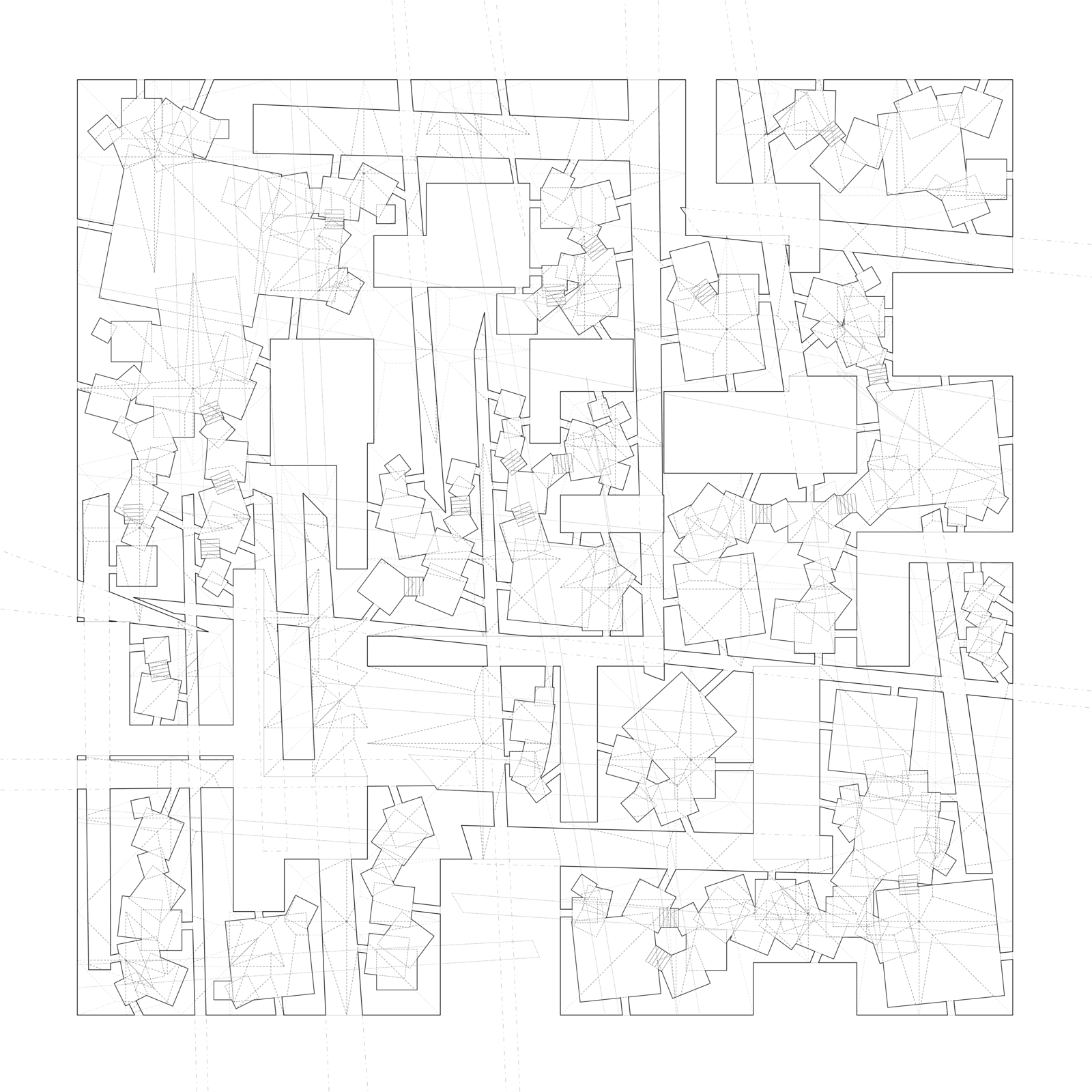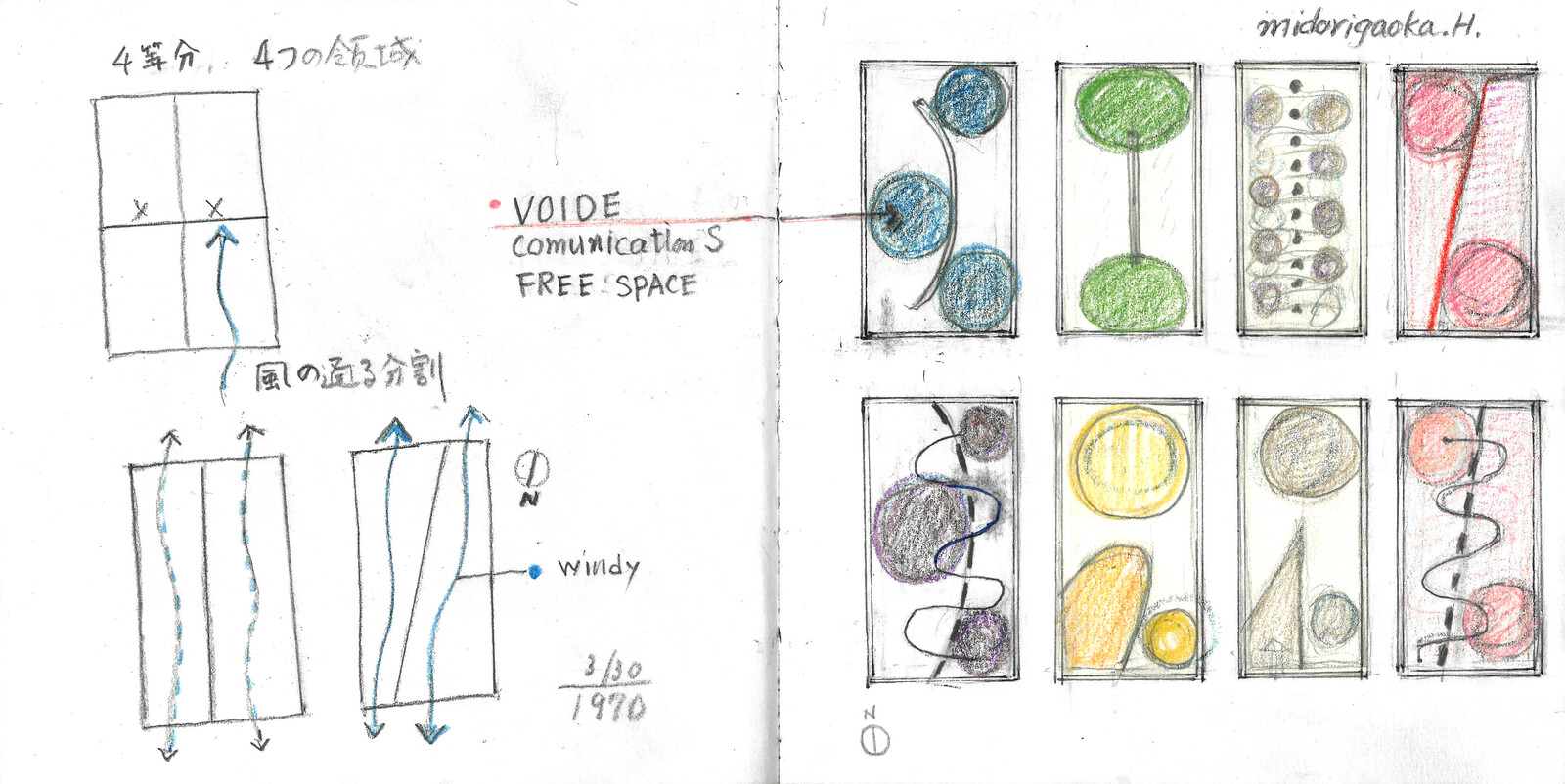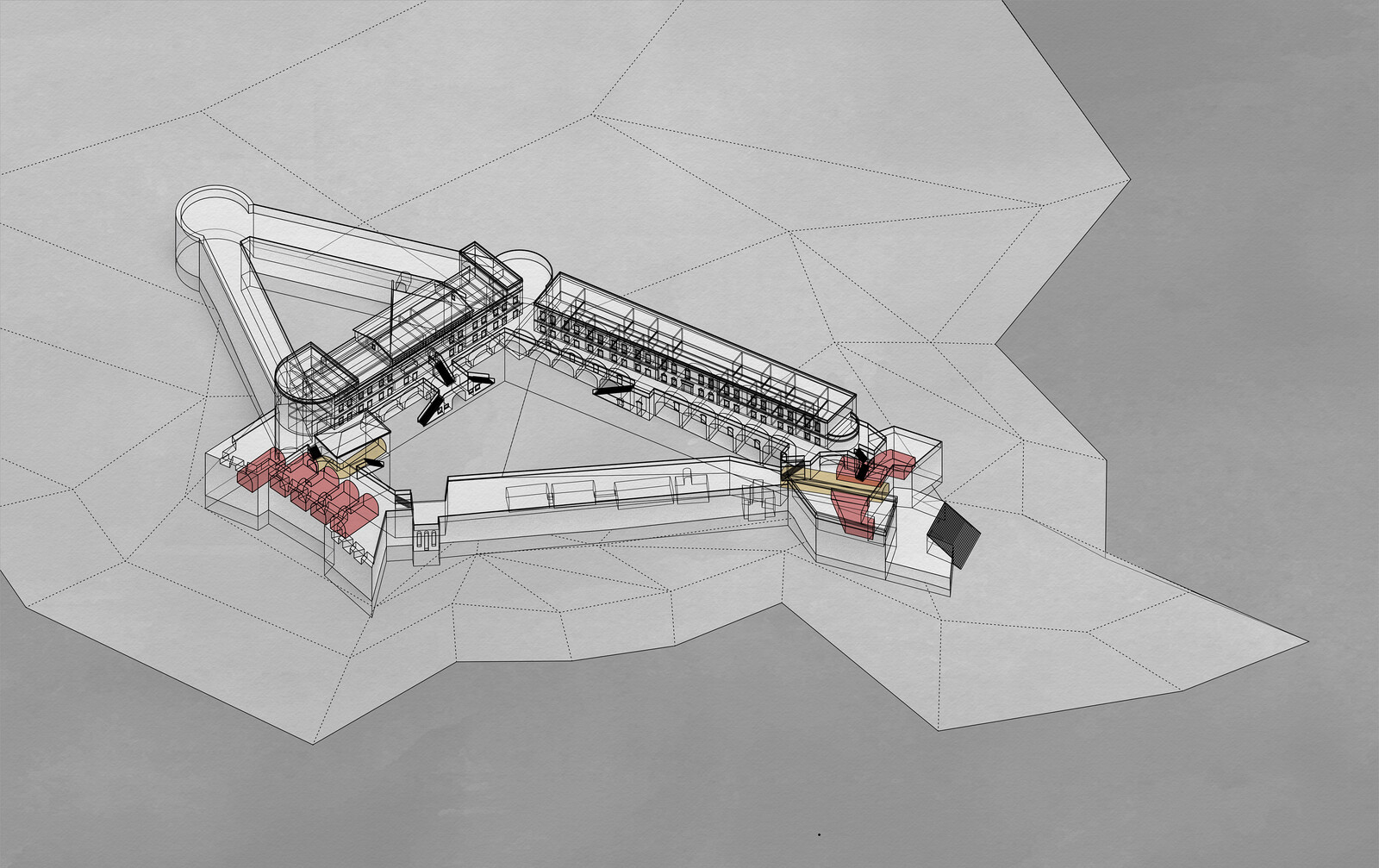Sara Sherif How did your work against the violence of prisons with The Funambulist begin?
Léopold Lambert I think it started from an intuition that architecture is inherently violent, and that this violence is always instrumentalized politically—whether explicitly and voluntarily or implicitly and involuntarily. It’s quite amazing that we are having this conversation over Zoom while you are in a mountain hut, which is what people tend to use to point to the most politically neutral and least violent type of architecture. Because, you know, it’s just a shelter. But still, it is an architecture, and as such, it materializes a certain violence. You told me that it is raining outside. I don’t know what the modalities are for you to be there, but I’m just going to assume that it’s an old-school refuge where anyone can enter. So it’s raining, and imagine you have some mountaineers seeking shelter. Maybe, in a few minutes, you’ll have a first family coming in, and then more, and then others, until the moment when the shelter will be full. This is looking at the situation in a very simplistic way, in thinking that the shelter is limited in space, but regardless, the next person who will try to seek shelter will find themselves excluded. Not because you are all evil people, but just because it’s at full capacity. Politically speaking, this situation is not so outrageous. But I’m aware that it is the same logic used in fascist metaphors to justify murderous borders, “that there’s not enough room in the country, blah blah blah.” But in this case, I mean it in a non-metaphorical, simply physical way.
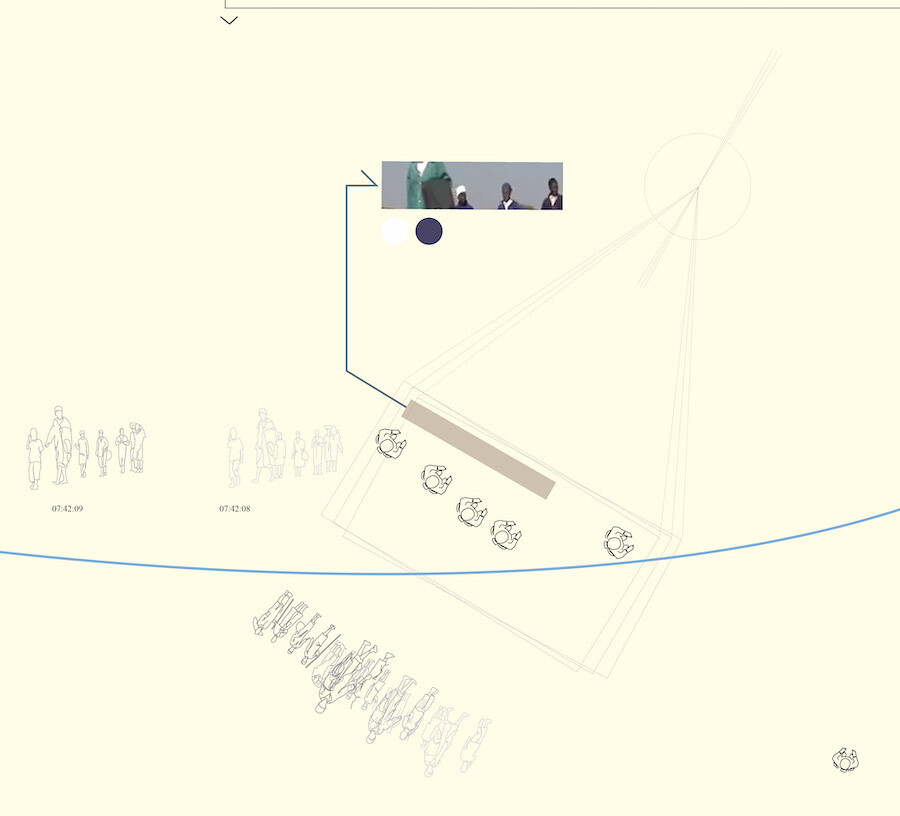

Cleansing ritual, August 10, 9:00am. Cula, umoya, amanzi. See: Lyse Comins, “Beach sacrifices raise ire of public,” IOL, February 27, 2012. Roanne Moodley, Event Architecture: Durban’s Beachfront, fragment, 2020.
SS Is that different from where you are speaking from today?
LL I’m not in a mountain hut, I’m in a Parisian apartment. The thing that prevents more bodies than mine from coming in is the walls around me and a little something we call a key, which operates in an apparatus we call a door that is associated with a lock. And a door is nothing else than a wall that has the capacity to grant access to certain bodies and deny it to others. The political regime that structures this access is the one of private property. Regardless of whether I’m “for” or “against” private property, the walls surrounding me materialize it. They enforce its political order, and they’re doing so with violence. If someone tries to go through my door or the walls that surround me, they’re going to hurt themselves—except if they have a jackhammer or something. But that makes us enter into another discussion that has to do with who is authorized or able to break doors or walls.


Cleansing ritual, August 10, 9:00am. Cula, umoya, amanzi. See: Lyse Comins, “Beach sacrifices raise ire of public,” IOL, February 27, 2012. Roanne Moodley, Event Architecture: Durban’s Beachfront, fragment, 2020.
SS Would you say that the prison is the climax of this form of violence?
LL The prison is one of the most extreme forms of architectural violence. The prison is not fundamentally different in terms of physical manifestation than the places we are in right now. I mean, we are both inside a space delimited by walls. Yet, if we want to go outside, we can, and we can because we both have this object we call a key, which operates on this other apparatus that we call a door. Of course, some of us have a few keys, and some of us have no keys whatsoever, which means that they are fundamentally excluded from the spatial formations of private property. Now, a person who is being imprisoned and in a political regime of incarceration—which is part of a bigger system, the penal one, which also involves the police and the judicial system—has no agency on the walls (i.e. on the doors) that surround them. To me, that is the most extreme form of violence that architecture can have on bodies.
SS In Switzerland, half of the people in pretrial detention are incarcerated because they don’t have the legal papers to be in the country. Can we understand the violence of prisons to be linked to why we put people there in the first place? Or is it more about the idea of having someone not being able to open the door and have the key to their survival?
LL We need to be very careful when we speak about the reason why people are being incarcerated, because if we’re talking theoretically, as we are now, I think we should be absolute. Meaning that if we are abolitionist of the entire carceral and police system, then it doesn’t matter the reason why someone has been incarcerated: they simply should not. After that, if we want to start organizing around an abolitionist agenda, we might need to take steps that focus on one type of carceral architecture, such as detention centers that reproduce the murderous violence of the border within a territory. But right now, we’re not politically organizing, we are just discussing theoretically. So I would rather stay at an absolute level and say, no one should be forced into carceral conditions.
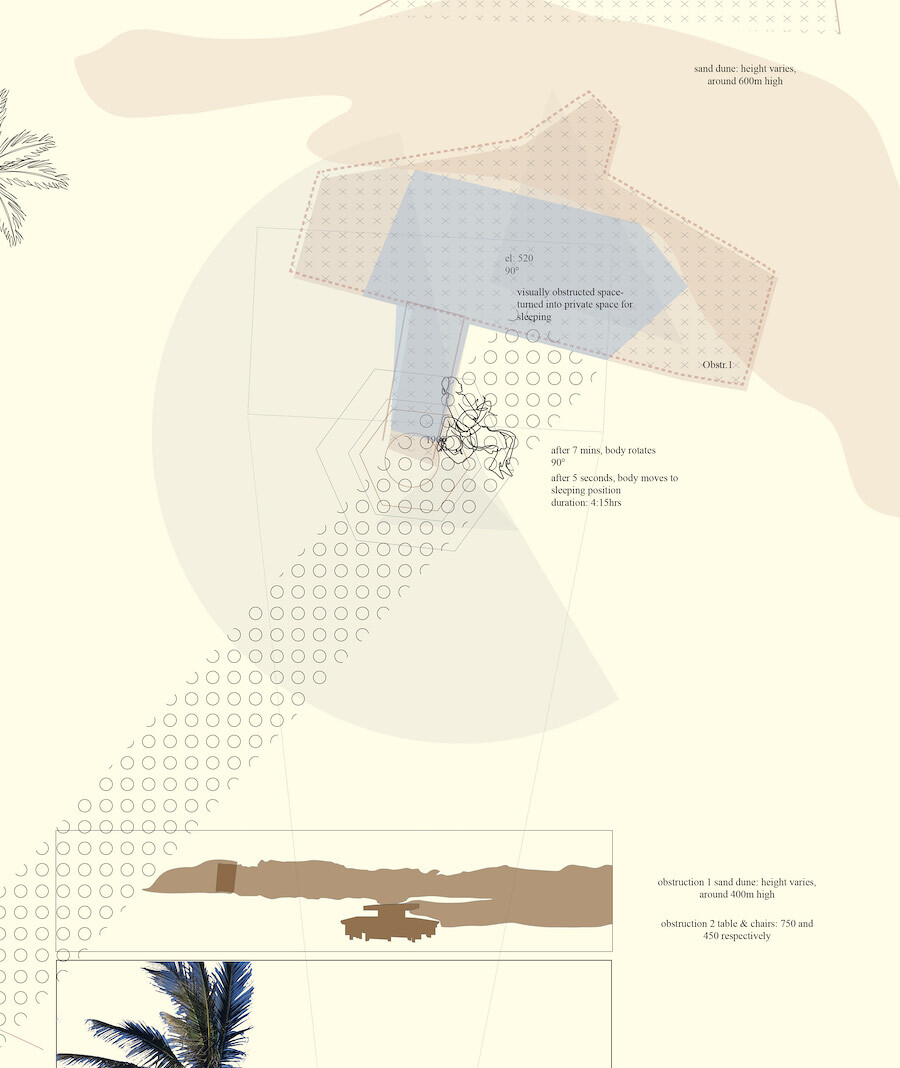

Man sleeping August 20, 12:15am–3:20pm. Sand dune, sight lines, private space. See: Desiree Erasmus, “South Africa: Durban’s homeless sue council for R530m to get their beachfront home back,” Daily Maverick, November 25, 2019. Roanne Moodley, Event Architecture: Durban’s Beachfront, fragment, 2020.
SS In your conversation with Nasrin Himada, you said that in front of the concept of abolitionism, the first question that seems to come to people’s mind is often something like “Yes, but what will you then do with the people incarcerated?” You then went on to say that “as we know well, the first question that comes to one’s mind is usually not the best one.” I really enjoyed this switch in perspective, as it made me question my way of thinking. I also found it important to see that it’s worth considering alternatives and understanding why people resort to violence in the first place rather than judging them for it. Could this alternative mindset also be linked to architecture? Or, is simply not building the only political position available to architects?
LL Abolition cannot just be the removal of the prison building; it needs to dismantle more than this, and construct more than architecture too. But at the level of architecture, this means preventing any prisons being built. The problem of carceralism is not merely the architecture that forms the prison, but the entire system. However, we need to attack each part of the system, and one of them is architecture. That’s where architects might have a role to play. And that’s why we started a pledge on The Funambulist—very much in the line of what Architects, Designers and Planners for Social Responsibility (ADPSR) had been doing for a very long time but mostly in North America and primarily focused on execution chambers and solitary cells—which simply says to never ever participate to any space of detention, whatever they are. Not just prison, but also detention centers, cells in high courts and camps of various kinds. That’s one thing people can do right here, right now.


Indian Minas, disrupted three times by children and two times by adults in 30 minutes. August 10, 12:05–12:35. Movement, patterns, cyclical. Roanne Moodley, Event Architecture: Durban’s Beachfront, fragment, 2020.
SS How can architects contribute to building an abolitionist society?
LL When it comes to building an abolitionist society, or rather plural abolitionist societies, I have no doubt that architects can have a role to play, but I don’t think it is up to them to define it. My intuition is that architects are only truly revolutionary when they serve a community that exists under the structural violence that architecture usually enforces. Architects should act as spatial expert without taking the initiative of what should be done. This is very different from what people are being taught at school, where they are being given much more agency than needed and, as such, much more power than they should handle. Revolutionary architecture only makes sense when it is the materialization of a revolutionary project. It can’t be the other way around.


Plastic bottle informal economy for sea and sand water collection. Position, interception, ukucela. Roanne Moodley, Event Architecture: Durban’s Beachfront, fragment, 2020.
SS I once talked with a teacher, who, if I remember well, built a house for an institution of juvenile offenders who committed severe crimes. It was very interesting to discuss with her. She was explaining, for instance, that they had planned a narrow staircase so that only one person could walk through it at a time. Hence, the young boys had to consider and wait for each other. She also negotiated for a certain degree of privacy and intimacy in the rooms of the teenagers—which was not existing before. Don’t you think it is better to have someone with, let’s say, good intentions building such things, rather than someone doing blindly what is asked?
LL Well, I think that almost all architecture is built with good intentions. Everybody will argue that they’re trying to make things a little bit better, even though what they do is surround bodies with walls. Of course, these places would still exist without architects, if we think of architects as people who have an architecture diploma. The suggestion that “if we don’t do it someone else will” is an accurate fact, but it is not a valid argument. The undeniable reality is that a prison cannot exist without a design of some sort.
SS What do you think some of the challenges are facing architects who want to serve the abolitionist agenda?
LL In the next few years, we look to see whether abolitionist arguments are being heard, or whether politicians start proposing alternatives to prison such as electronic bracelets or house arrests—scenarios that also necessitate design. We will have to be very careful not to accept those as acceptable options. At the very least, we should make sure that as many people as possible that we call architects simply refuse to participate in any of those projects. Whatever their intention might be.


Eating bench: KFC, Steers and 300ml Creme Soda, ice cream, September 7, 10:00am to 3:00pm. Residue, surface, arm rests. Roanne Moodley, Event Architecture: Durban’s Beachfront, fragment, 2020.
SS What do you think the success of this depends on? The conscience of architects?
LL I don’t care too much for people’s consciences. It has more to do with the political force of refusal. I am not saying that the ultimate political tactic is to make sure that absolutely no one will ever do it. That would be a ridiculous fantasy. But bringing people into an aggregate of refusals is already acting politically. It is also another way to bring people to wonder about the power of architecture. At the end of the day, most architects never really participate in such designs. Not because they absolutely refuse it, but just because it’s not a possibility they have encountered. What does that mean for much more common programs, such as a police station? Would you design a police station? Or even more simply, would you design a housing building in a neighborhood that is being subjected to heavy gentrification—and where entire working-class populations of color, who might have lived there for several generations, are being displaced? In that case, we do know many architects doing it. Starting with this refusal of spaces of detention is also a way follow the various degrees of violence that architecture enacts—and always essentially against the same people.


CircusCircus, minimum entry R37. Admission, level change, security. Roanne Moodley, Event Architecture: Durban’s Beachfront, fragment, 2020.
SS One of the core concerns of architecture is to be aware of the consequences of each detail we design. So wouldn’t it be better to have an ally among enemies? I mean, as an architect, you still have the power to negotiate space, a wall or a boundary. Someone aware of these questions might produce less damage than someone blindly accomplishing the given task.
LL Eyal Weizman wrote an entire book about this called The Least of All Possible Evils. There’s a chapter dedicated to how some people from the Israeli left advocate for the apartheid wall in Palestine to be built a few dozen meters further one way or another. So, for instance, instead of having the wall cut someone’s field in half, trying to have it going around the piece of land. Here again, we can start the argument that it’s a little better for the field’s owner, but at the end of the day, if you participate in this kind of negotiation, you give a form of legitimacy to that wall. You allow for this horrendous piece of architecture to be made with contradictory arguments. You end up strengthening its justification.


Newspaper selling. Body, orientation, boundary. Roanne Moodley, Event Architecture: Durban’s Beachfront, fragment, 2020.
SS That’s a powerful example. But how about less obvious situations?
LL In practice, things are less smooth, and you have to make decisions based on negotiation. There is no outside from where we can act and see things. But still, we need to have red lines. Things that we can negotiate—and maybe improve—and things that are absolutely out of question. I don’t argue for us to all have the same red lines, as our political engagements might differ. But I would like to at least propose some of them and dismantle the hypocrisy that usually lies behind the argument of negotiation. If you’re going to build something that is of great violence, don’t pretend that you did your best for the people who will receive this violence.


Tide chart. September 1 to 11. Shoreline, time, temper. Roanne Moodley, Event Architecture: Durban’s Beachfront, fragment, 2020.
SS In the Violence by Design zine, which Spectra Studio made in collaboration with The Funambulist, there is a moment about Frank Gehry’s course at Yale, where students are supposed to reimagine the architecture of incarceration. When I read it, if I’m completely honest, it didn’t directly appear that outrageous to me. The violence of its content was coated with a romantic brief and idea of reimagining the world—something which is very common in the university. It was about the thoughtful agency of the architect and the power it has to improve the world. But then, I started to realize how dangerous this form of expression can be. Gehry was using references of monasteries or summer camps to rethink the design of prisons. In a way, his examples, which have a minimal degree of violence, made the actual reality of the brief even more blurry. It fell into something theoretical and abstract, which is dangerous.
LL I don’t know what happened at the Yale studio. There is a small possibility that some students rebelled against this brief. It’s true that in the pledge we did, we’d say that if you’re a student and you find yourself in a studio where the brief is to do a prison, then you should ask to be removed from it. However, school being a space to have time to reflect, train yourself to think, and have political engagement, this sort of rebellion within the studio could perhaps contribute to crucial conversations. But what’s for sure is that, if the brief is “Let’s design a better prison,” such crucial conversations can only happen in opposition to it and independent of the will of the professor.
SS Why was it important for you to ask Roanne Oberholzer (Moodley) to complement this conversation with a graphic contribution?
LL Her interpretation of architecture as an event approaches politics as it materializes in a space-time continuum. This dimension of time is something I’ve only recently really grappled with. Reading (and occasionally commissioning) the work of lawyer and afrofuturist artist Rasheedah Phillips these past five years has been instrumental in how I attempt to understand time now, and this comes as a crucial addition to my understanding of space. Roanne’s architectural work is fundamentally based on these four dimensions. In the settler colonial context of South Africa (or other colonial contexts), it constitutes a powerful field of potential.
Confinement is a collaborative exhibition curated by gta exhibitions and e-flux Architecture, supported by the Adrian Weiss Stiftung and the ETH Zürich Foundation.









